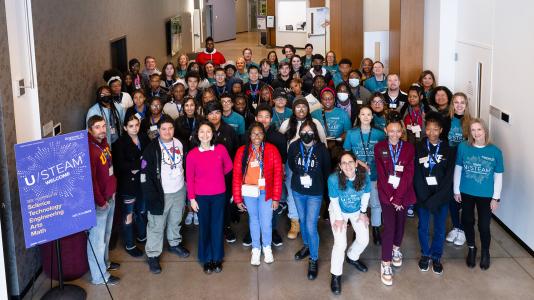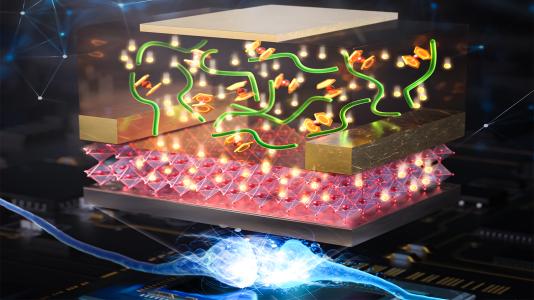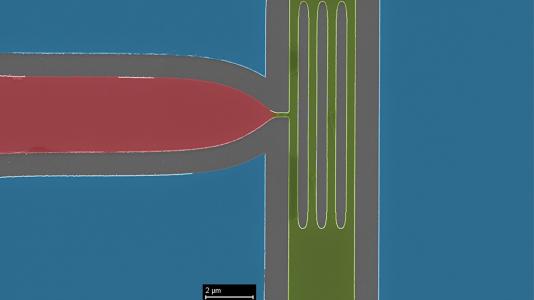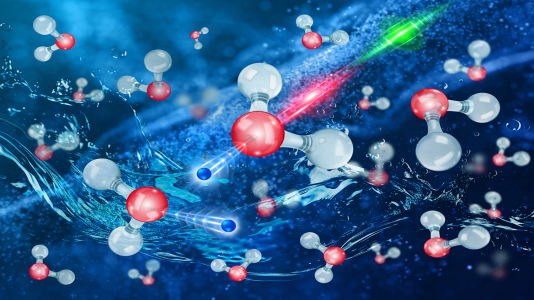Nanoscience News
Nanoscience News

Preventing performance decline in Li-ion cells with ether electrolyte
In a PNAS paper, researchers introduces a novel ether electrolyte, 1M LiBF4 plus 1,2-dimethoxyethane, that enables graphite anodes with remarkable capacity retention and cycling stability.

Unexpected electronic properties revealed in the dichalcogenide, tantalum disulfide (1T-TaS₂)
In a Physical Review B paper, researchers address ongoing debate surrounding the electronic properties of tantalum disulfide by employing resonant inelastic X-ray spectroscopy combined with first-principles calculations.

2D ionic liquid behavior of charged rare-earth clusters on a metal surface
In an Advanced Science paper, researchers used scanning tunneling microscopy to investigate the structural and electronic properties of 2D rare-earth clusters on a one-cluster-at-a-time basis.

Argonne’s Ilke Arslan named fellow of the Microscopy Society of America
Most recently, Arslan’s research has focused on building an ultrafast electron microscope at the Center for Nanoscale Materials.

Argonne hosts See Yourself in STEAM event for students from groups underrepresented in STEM
Forty 10th- and 11th-grade students from Chicago Public Schools recently visited Argonne for the U/STEAM event.

Scientists use novel technique to create new energy-efficient microelectronic device
Breakthrough could help lead to the development of new low-power semiconductors or quantum devices.

Giving particle detectors a boost
Device could help facilitate the operation of new particle colliders, such as the Electron-Ion Collider.

First-ever atomic freeze-frame of liquid water
Scientists stop the motion of atoms to watch electrons move in liquid water.

Study reveals magneto-mechanical device potential of van der Waals magnets
In a Nano Letters paper, ultrafast electron microscopy unveiled the intricate dynamics of spin-mediated coherent acoustic phonons in a thin-film cavity of a van der Waals antiferromagnet, FePS3.

Synthesis of borophene nanoribbons with attractive quantum-confined electronic properties
In an ACS Nano paper, researchers achieved the bottom-up synthesis of borophene nanoribbons through atomic boron deposition on vicinal Ag(977) substrates, overcoming challenges associated with limited boron precursors and complex bonding structures.

Getting to know the 'ghost' inside batteries
An Argonne team developing materials for solid-state batteries took an unexpected detour to investigate tiny short-circuits known as soft-shorts. Their insights will benefit battery researchers around the world.

Media Tip: Major milestone achieved in new quantum computing architecture
html lang="en" dir="ltr" prefix="content: http://purl.org/rss/1.0/modules/content/ dc: http://purl.org/dc/terms/ foaf: http://xmlns.com/foaf/0.1/ og: http://ogp.me/ns# rdfs: http://www.w3.org/2000/01/rdf-schema# schema: http://schema.org/ sioc: http://rdfs.org/sioc/ns# sioct: http://rdfs.org/sioc/types# skos: http://www.w3.org/2004/02/skos/core# xsd: http://www.w3.org/2001/XMLSchema# ">
